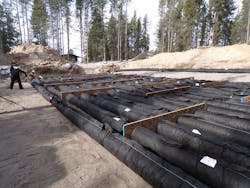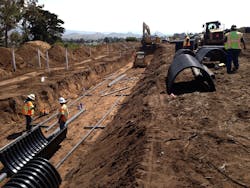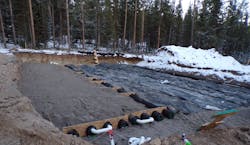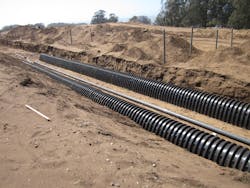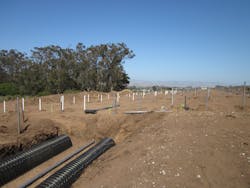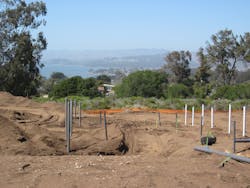Issues facing decentralized wastewater treatment today
Traditional centralized wastewater treatment plants have been the norm for decades for highly populated areas, but they are often costly and face many challenges such as overflows, aging infrastructure, emerging pollutants and high-strength wastewater.
Decentralized wastewater treatment systems are also a critical part of our nation’s infrastructure and have gained popularity as a sustainable alternative to centralized systems. Decentralized systems offer numerous benefits, including enhanced pollution control, efficient sludge management, tertiary treatment capabilities, managed aquifer recharge (MAR) and nutrient reduction. Engineers encounter various challenges when developing and implementing designs for these systems, from selecting appropriate technologies to optimizing treatment processes. But there are advantages for decentralized wastewater treatment systems despite the challenges faced by regulators, engineers and installers.
Benefits of decentralized wastewater systems
Enhanced pollution control
One of the primary advantages of decentralized systems is the ability to efficiently treat and control pollutants present in wastewater due to discharging to the soil environment. Traditional centralized treatment plants, on the other hand, have a limited retention time and may struggle with certain emerging contaminants, such as pharmaceuticals, personal care products and microplastics.
Additionally, these systems can be designed to target specific pollutants based on the local wastewater composition and environmental concerns.
Nutrient reduction
Nitrogen is a common constituent in wastewater. Without proper management it can bring adverse effects onto the local environment, particularly for aquatic ecosystems.
Conventional decentralized treatment systems consisting of a septic tank and drainfield provide limited nitrogen attenuation. However, sensitive areas require additional nitrogen reduction. On these sites, decentralized systems can incorporate advanced treatment technologies to effectively convert ammonia to harmless nitrogen gas through nitrification and denitrification processes.
In communities where it was previously thought that sewers were the only solution at a high infrastructure expense, they can consider decentralized systems.
Efficient sludge management
Sludge generation is a common result from wastewater treatment processes. Sludge processing and disposal then becomes part of the management plan. Tremendous inputs of energy are necessary for the aeration processes and this in turn produces large quantities of sludge. Handling and disposing of this sludge can be challenging and expensive.
Treatment of high-strength wastewater
Industrial facilities and commercial establishments often generate high-strength wastewater that requires specialized treatment.
When designing decentralized systems, engineers and regulators should not shy away from high-strength facilities. Similar to centralized systems, decentralized systems can be custom designed to treat high-strength wastewater. Decentralized systems are modular and customizable to meet regulatory discharge limits.
Advanced technologies can efficiently handle high organic loads and challenging industrial effluents.
Tertiary treatment capabilities
Primary and secondary treatment stages are typical for municipal wastewater applications, and most permits require additional treatment to meet stringent discharge standards or facilitate water reuse.
Energy efficiency
Energy consumption is a significant aspect of wastewater treatment and decentralized systems have a minimal carbon footprint by extracting, consuming and treating water on site. Gravity and the use of the natural treatment capability of the soil play a major role to limit energy inputs. Centralized systems pump effluent long distances and in larger volumes. In some cases, inflow and infiltration adds to the extensive energy inputs to manage the increase in flow.
Managed aquifer recharge (MAR)
Selection of appropriate technologies
Designing decentralized systems requires careful consideration of rules and regulations, the wastewater composition, treatment requirements, available resources and environmental factors. Design engineers must navigate through a vast array of treatment technologies to specify the best solution for the site. This involves assessing the treatment efficiency, maintenance requirements, energy consumption and cost-effectiveness of each technology, while also considering the scalability and adaptability of the proposed solution.
Decentralized treatment in action
Los Osos, California
In 2013, a community wastewater treatment system was designed and installed that would treat a design flow of 1.6 million gallons per day and recharge the local aquifer. From the community WWTP, the treated effluent is pumped to a large chamber dispersal field that was installed along a hillside with ideal soils to facilitate aquifer recharge.
Jackson, Wyoming
The University of Wyoming’s AMK Ranch research center required an upgraded decentralized treatment system to serve the existing lodge, houses and cabins.
Owned by the U.S. National Park Service’s Grand Teton National Park and adjacent to Jackson Lake within the park, the system needed to comply with federal regulations. A solution with a small footprint was desirable to minimize impact and disturbance of the pristine area. Any solution had to be compatible with the extreme cold and frost depths prevalent in area winters.
A 6,500-gallon-per-day Advanced Enviro-Septic (AES) treatment system with 3,120 linear feet of AES Pipe was selected. The passive AES treatment system provided a much smaller footprint than conventional systems and could be buried at a greater depth given the extreme winter conditions.
Conclusion
Decentralized wastewater treatment systems offer numerous benefits such as enhanced pollution control, efficient sludge management, high-strength wastewater treatment, tertiary treatment capabilities, MAR and nutrient reduction. Decentralized wastewater treatment systems provide design engineers with the solutions to address emerging pollution challenges and promote water reuse.
Design engineers face various challenges in developing effective decentralized wastewater treatment systems, including selecting appropriate technologies, managing sludge, optimizing energy consumption and addressing emerging pollutants. Overcoming these challenges requires interdisciplinary collaboration, continuous research and innovation to create robust and adaptable systems that align with local needs and environmental goals.
By embracing these challenges and refining the design and implementation of decentralized wastewater treatment systems, engineers can contribute to a more sustainable and resilient future for wastewater management, safeguarding public health and the environment.
About the Author
Dennis Hallahan
Dennis F. Hallahan, P.E., is the Technical Director of Infiltrator Water Technologies. Dennis has over 30 years of experience with the design, construction of decentralized wastewater treatment systems. He has authored numerous articles for on-site industry magazines and regularly gives presentations nationally on the science and fundamentals of on-site wastewater treatment systems. Dennis also serves on various national industry association wastewater committees.

